The BMX tailwhip is an iconic trick. This trick is regularly learnt soon after mastering the barspin and quarter pipe. A tailwhip is where the rider either hops, airs or jumps their bike and while in the air they spin the frame and back end of the bike around the bars.
Perfecting this trick in all its variations is very impressive and provides a great experience for other, more complex tricks. Important lessons on bike control and coordination will be learnt alongside this trick. Completely removing half of your bikes contact points is scary before you kick the bike out of the way. It will be hard to gain the courage to learn to tailwhip but it’s a great trick to learn that will progress a rider well on their way to achieving a professional standard.
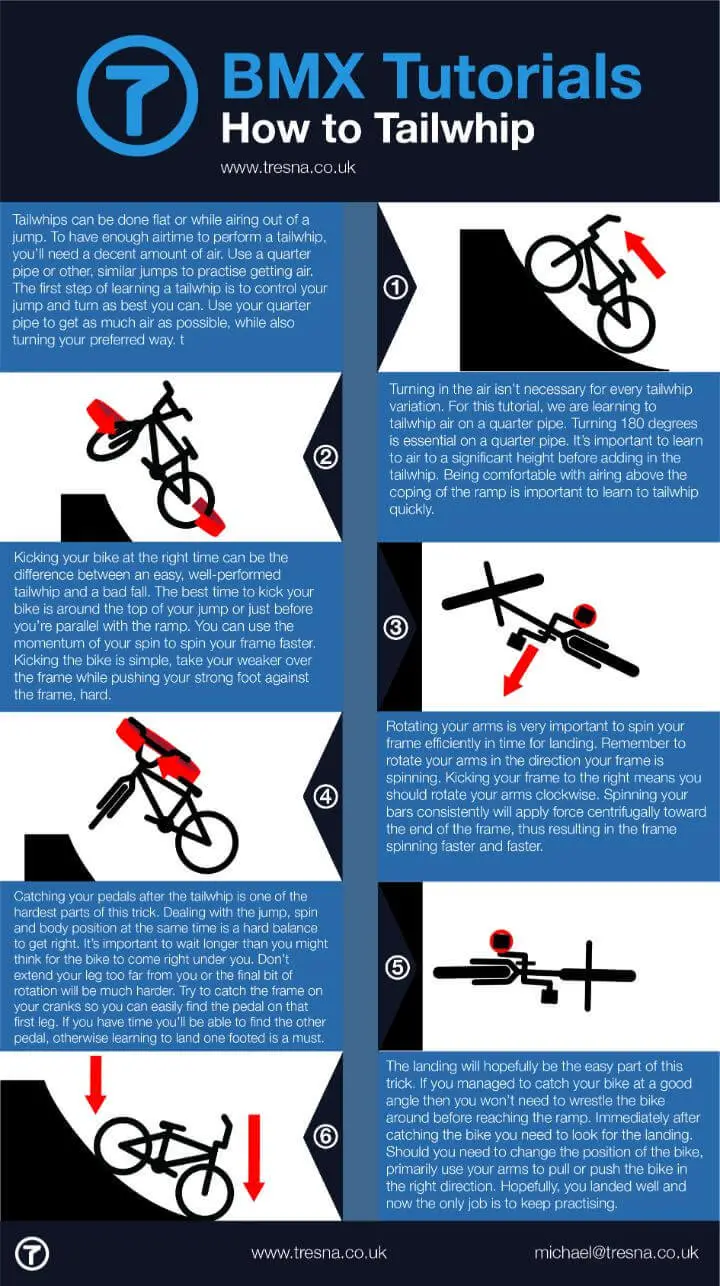
BMX Barspin Tutorial – How to Barspin on a Bike
The BMX barspin is a great trick to learn when you’re starting to get serious with riding. It takes quite a bit of confidence and commitment but it’s a fabulous skill to unlock if you want to take your riding to the next level.
How to do a BMX Tailwhip
1. Practice Jumping Out
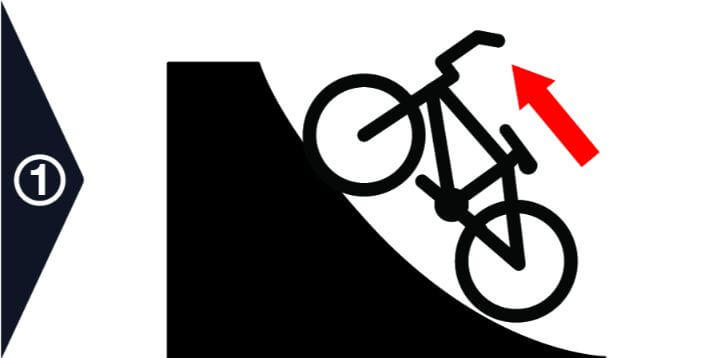
Tailwhips can be done flat or while airing out of a jump. To have enough airtime to perform a tailwhip, you’ll need a decent amount of air. Use a quarter pipe or other, similar jump to practise getting air.
In my opinion, this is the best variation to learn first. Anyone with the anticipation of learning to tailwhip flat without any previous experience will have a very tough time. If you can find a good quarter pipe or fly out then overcoming the fear of attempting this trick will be much easier.
Before even trying to perform this trick you need to gain as much air as possible. Being able to comfortably get a few feet above the coping is a great advantage. If you can’t air very well then try to find a ramp that’s positioned next to a wedge or grass verge and use that as your landing.
2. Turn in the Air
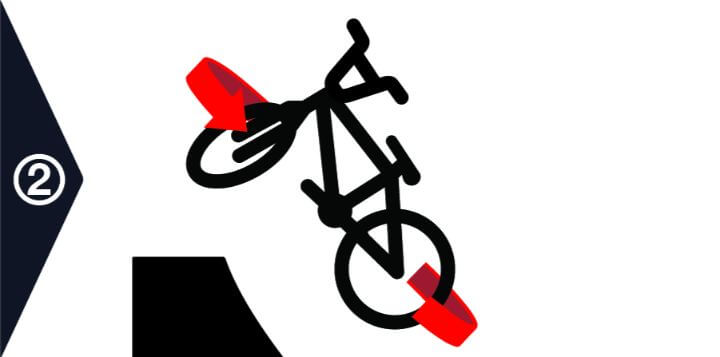
It’s evident that you need to turn in the air before landing this jump. There’s nothing special about learning to do this. If your takeoff and run-up is good then keep your body position relaxed and you’ll turn just fine.
3. Kick the Bike
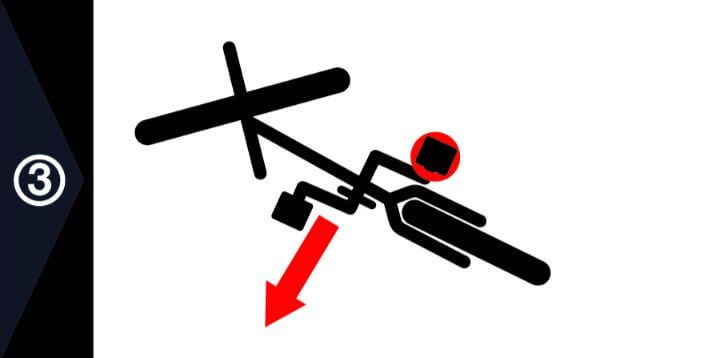
Kicking your bike at the right time can be the difference between an easy, well-performed tailwhip and a super annoying learning curve. The best time to kick your bike is around the top of your jump or just before you’re parallel with the ramp. At this point, you can use the momentum of your spin to kick your frame faster. Be careful not to kick your frame too hard as it can put you off balance for the landing.
There’s a big step from just jumping to kicking your frame and it can get scary. Build up to it by learning to take one foot off the bike. As you get more confident move your foot further and further away from the bike. If you can acquire some knee pads then you’ll find the first few falls much easier.
4. Spin Your Arms
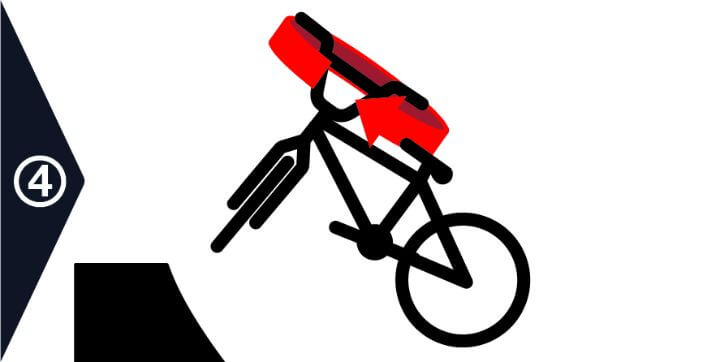
Rotating your arms is very important to spin your frame efficiently in time for landing. Remember to rotate your arms in the direction your frame is spinning. Kicking your frame to the right means you should rotate your arms clockwise. Spinning your bars consistently will apply force centrifugally toward the end of the frame, thus resulting in the frame spinning faster.
Performing this move is easy in theory but it’s also very easy to throw yourself and your bike out of balance. Most beginners that try to rotate their arms like this will push their bike out in front of them with the back wheel falling lower. It’s nearly impossible to recover from this in the air time you have.
5. Catch the Bike Again
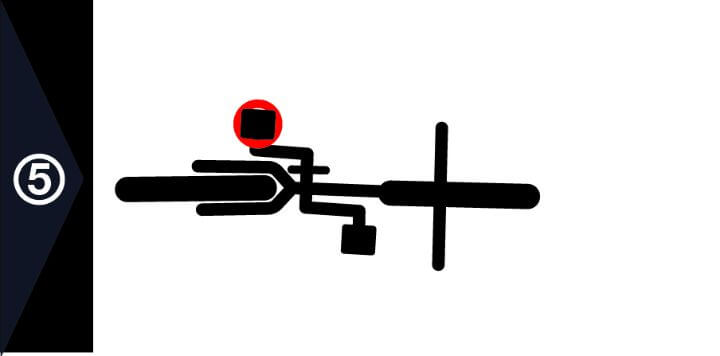
Catching your pedals after the tailwhip is one of the hardest parts of this trick. Dealing with the jump, spin and body position at the same time is a hard balance to get right. It’s important to wait longer than you might think for the bike to come right under you. Don’t extend your leg too far from you or the final bit of rotation will be much harder. Try to catch the frame on your cranks so you can easily find the pedal on that first leg. If you have time you’ll be able to find the other pedal, otherwise learning to land one footed is a must.
You’re doing a wonderful job if you’re managing to get the frame around and into a position where you need to catch your pedals. Ideally, you’ll have enough time to land your feet on both pedals but you often won’t. Don’t worry about this, it’s very easy to land on one foot. You will often find the other pedal easily when you hit the ground.
6. Landing!
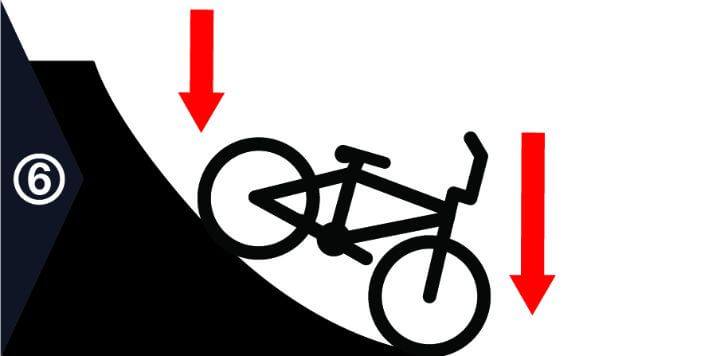
The landing will hopefully be the easy part of this trick. If you managed to catch your bike at a good angle then you won’t need to wrestle the bike around before reaching the ramp. Immediately after catching the bike you need to look for the landing. Should you need to change the position of the bike, primarily use your arms to pull or push the bike in the right direction. Hopefully, you landed well and now the only job is to keep practising.
Easy, Intermediate and Advanced Trick Variations
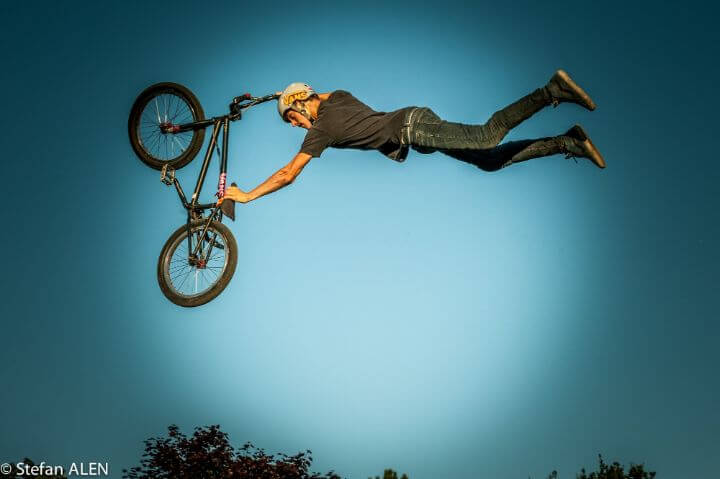
Just like many other BMX tricks, there are loads of variations of the tailwhip. With enough practice, you can perform some variation of a tailwhip in so many different scenarios. The great thing about the tailwhip is that there are variations for every skill level. There is a great progression from the simplest tailwhip air up to variations on smith and feeble grinds. The following are some of the most popular tailwhip variations.
Footjam Tailwhip
The foot jam tailwhip is performed slightly differently to regular tailwhips, the frame still rotates around the bars but weirdly, your front wheel stays firmly on the ground. For this variation place your foot on the front wheel and allow it to jam between the wheel and your forks.
Once the rear of your bike rises off the ground kick the frame around, wait and once the frame comes back to you jump back onto the pedals. Brian Blyther invented this trick in the early 80s.
Opposite Tailwhip
There’s not much to explain about the oppo-whip. This trick is just the act of performing the trick in an unnatural direction. It sounds simple but doing a trick the opposite way is extremely hard, a lot like writing or throwing with your weaker hand.
Superman Tailwhip
The superman tailwhip is an impressive trick. This trick can only really be performed on a larger jump or vert ramp. While in the air the rider will kick their frame just like normal before extending their legs backwards. The legs are extended backwards as though doing a regular superman or in a similar way to the position the real superman flies.
After about 180 degrees of frame rotation, you need to start pulling your legs back into the bike. At the same time twist your wrists forward while holding your grips tight. This will rotate your bike back up into a good position for landing.
Double/Triple Tailwhip
The double, triple and sometimes even quadruple tailwhip is simple enough to describe. You simply need enough air time to spin your frame around the bars multiple times. If you’re comfortable enough with the tailwhip then a double requires the same technique except you’ll need to spin your hands much harder.
Joe Johnson landed the first triple tailwhip, followed by many others including Dave Mirra and Dennis Enarson. It wasn’t until 2008 that the first quad whip was successfully landed. Mike Spinner somehow achieved the quad whip on the Dew Tour in Cleveland. There have only been several others land this trick in the years since.
180/360/540/720 Tailwhip
It’s not clear where the spinning tailwhip originated. It’s a combination of two extremely common tricks that riders often argue about its history. Many believe Brian Vowell was the first to land a 360 whip in 1992 over a set of dirt doubles. Dave Osato was the first to successfully land regular and oppo variations. Somehow Mike Spinner landed triple and quad 360 whips in competition in Cleveland, 2008.
Mike Spinner and Kyle Baldock are two of the most well-known riders to land 540, 720 whips and more. They must have had some incredible speed and force for these tricks.
Backflip/Frontflip Tailwhip
As the title says, this is where the rider pulls a tailwhip during a frontflip or backflip. The great rider Mat Hoffman landed a backflip tailwhip way back in 1993. He was a significant pioneer in the BMX world. As the years have progressed so too have the riders attempting harder and harder tricks.
The backflip and frontflip tailwhip is becoming more and more common with double and triples often being landed. Double backflip tailwhips have been landed enough times that is has been named the Helicopter.
Before his unfortunate accident, Scotty Cranmer was one of the first to land a frontflip tailwhip at Salt Lake City Dew Tour in 2007.
Flair Whip
The BMX flair is regarded as one of the most difficult tricks to land, needing a significant amount of momentum and bravery to even attempt it. A flair whip is even more complex since you need to kick your frame while doing a backflip and 180 at the same time. I wouldn’t even know where to start.
Jamie Bestwick, Dave Mirra and Vince Byron were among the first professional riders to attempt and land a flair whip after 2003. Due to the sheer amount of speed and momentum needed for this, it’s most common to see flair whips landed on vert ramps and sometimes concrete skateparks.
Surprisingly the double flair tailwhip has been landed before, although this is much rarer.
Downside Tailwhip
I think the downside whip is a great looking trick. Originally called the Boomerang air, the rider will spin one direction while the frame of the bike spins the opposite. You will either need to be able to do an opposite spin or oppo whip to successfully land this trick.
Dirt jump or skatepark hips are the best places to try this trick. The natural rotation of the jump helps with the spin needed to get around your bike.
Flatspin Tailwhip
The flat spin whip is a great trick rarely done by many riders. Having only being landed for the first time at X-Games 2005, it’s still a trick only performed by the very best. Chad Kagy regularly lands Flatspin tailwhips in competition, even having the ability to do double flat spins.
The rider will have to do a flat spin 540° while doing the whip in the middle of the spin. Should you try this trick it’s best to master both of these skills separately before trying them together.
Windshield Wiper
The windshield wiper is a great looking trick. A lot like a windshield wiper, during this trick the frame spins one way around the bars before spun back the opposite way.
The tricky part of this trick variation is having enough time. You’re effectively doing a double whip except slower. After the first rotation, you have to stop the frame and kick it the opposite way. Watch the video below to see Kyle Baldock smash a 360 windshield wiper in competition.
Matt Sparks initially landed this trick in 2006, naming it the Windshield wiper after doing so. The first Windshield Wiper backflip was landed in 2009 at a Dew Tour competition in Orlando, Florida by T.J Ellis.
Kyle Baldock Double Backflip + 360 Windshield Wiper – BMX Dirt Finals Run 3 – SLC Dew Tour
Fingerwhip
The Fingerwhip is a trick commonly performed on a scooter. The rider will jump just like normal except they will then pull the bike up, take one hand off and then use that to push the frame. This variation is especially hard because you have to position the bike in the air and then keep control while only using one hand.


